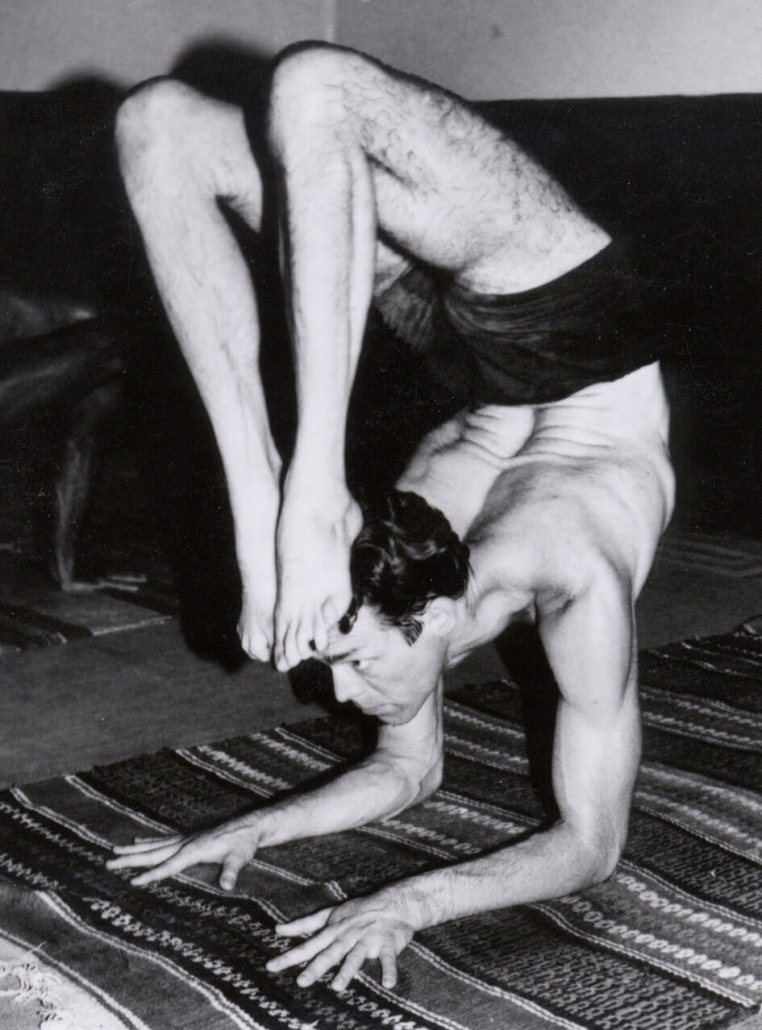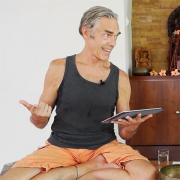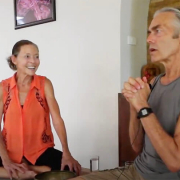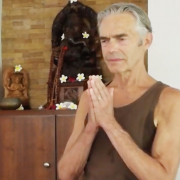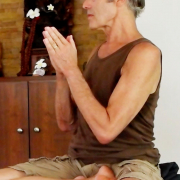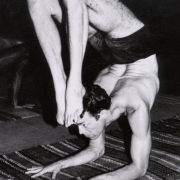 https://samahitaretreat.com/wp-content/uploads/2021/10/Richard-Mysore-89-3.jpg
1278
945
Richard Freeman
http://samahitaretreat.com/wp-content/uploads/2024/01/samahita-logo-v2.svg
Richard Freeman2021-10-07 04:54:272024-02-15 09:46:13Deep Avoidance
https://samahitaretreat.com/wp-content/uploads/2021/10/Richard-Mysore-89-3.jpg
1278
945
Richard Freeman
http://samahitaretreat.com/wp-content/uploads/2024/01/samahita-logo-v2.svg
Richard Freeman2021-10-07 04:54:272024-02-15 09:46:13Deep AvoidanceDeep Avoidance
Deep avoidance and fear of yoga is something I’ve experienced on occasion, so perhaps you have too. When I was in Mysore, India studying at Pattabhi Jois’ house, I got up very early in the morning, often at 3 or 3:30 am to prepare before practicing. It would usually take about an hour and a half of psyching myself up—doing meditation, prāṇāyāma, and prayer—in order to face his front door, which I equated with the portals of death.
My assigned time slot was one of the first, but if you were scheduled to go later as you walked up to the door, you’d hear the furnaces being stoked and the furnaces were actually the breathing of the other students. Often because they were not well practiced, they would be breathing more heavily than would be appropriate for the yoga they were practicing. However, they too were entering into their own “portals of death” and so it seemed to work out, even with rougher breathing.
What usually would get me through those practices is that I would think,” It’s just a breathing exercise.” To this day I still consider yoga āsana that—just breathing. If you concentrate on the mantra of the breath, then the body goes through transformations and miraculously an hour or two later you walk out of the śāla feeling light and clear. In those days, I’d start out filled with fear and a desire to avoid the practice, and then I’d feel so good afterward that I’d forget my resistance and feel transformed. Until about 3 in the morning the next day.
We know from the Yoga Sūtra that yoga is said to be a path toward liberation, true awakening. It says that we begin when we suspend thought and that this can lead to samādhi. Not that samādhi is the goal of yoga—it’s really more of a tool to be applied repeatedly to all things and circumstances. Suspension of thought therefore is the imperative first step if you are even to begin deeper practices. This doesn’t mean stopping thought or wiping out the mind, it means that you learn to set aside your preconceptions, expectations, attachments, and so forth so you can show up to a more accurate taste of reality. Sometimes we can just do this setting aside, and sometimes it’s not so easy. But then if we try again the next day, and then again and again—if we have the intention to show up fully—then things begin to shift. Like for me when I was in Mysore in those early days. I was able, with the rituals of my morning preparation for āsana, to put aside my fears and resistances—things that originated in my mind—and by the end of practice a sort of harmony would have settled into my whole body and mind. And even deeper than that when I think about it. And the residue would last until early the next day. All this happened when I dropped awareness into my breath—sometimes out of good practice, sometimes out of fear and sometimes because I’d learned to trust the breath when all else seemed unpredictable. I can’t say I was experiencing samādhi, but definitely I was beginning on the path of finding the wonderful taste of samādhi in the everyday experience of the practice.
“If you concentrate on the mantra of the breath, then the body goes through transformations and miraculously an hour or two later you walk out of the śāla feeling light and clear. …..”
In the first chapter of the Yoga Sūtra, called the Samādhi Pāda, Patañjali talks about samādhi. That there are different samādhis which have content in the mind and when those contents are dropped, you experience what is called asaṁprajñāta samādhi, or samādhi with no seed or no pattern of intuition through which the mind concentrates. You get to that state by gradually developing the ability to focus and concentrate the mind on a pattern—any pattern. When the mind lets go like that, there’s this sort of spontaneous insight into the true nature of things as being profoundly interconnected, at which point letting go into the unknown becomes possible, even satisfying. The moment of letting go is usually very short at first. Kind of like what you’d do if you were trying to balance on top of a tall building. You’d stand on one foot near the edge, holding onto the rail and you’d breathe. (Of course, don’t try this at home—metaphor is such a good tool until you take it literally). You’d steady your gaze and make sure the knee in your standing leg was micro bent while your foot was firmly planted and awake. You’d soften your jaw and release your palate to take a deep breath and then for a split second you’d let go of the rail. Hopefully you’d stay steady long enough not to fall and to enjoy a flash of balance before grabbing the rail again. And the letting go into samādhi that Patañjali describes is like this, but it’s letting go of ideas, habits and reflexive responses—the nirodha referred to in the second verse of the Yoga Sūtra.
Patañjali says that at that point, when you let go in this innocent manner, the unknown becomes a sustaining connection to everything. And then you experience, very briefly at first, asaṁprajñāta samādhi. As the chapter progresses, he explains in more detail this process of letting go, and he also explains the obstacles to this type of samādhi. By the end of the first chapter, there is the sense of profound understanding—like you’re hearing something you already know. While at the same time, you’re left quite mystified as to what he is talking about. So, in a sense that too is a letting go. The release of the need to know, the need to reduce something that cannot be reduced to an idea of it.
In chapter two, called the Sādhana Pāda Patañjali elaborates. Sādhana means “what to do” which is good, because the first chapter leaves you with this strange feeling like you can’t tell if you’re excited or nauseated. ”Oh, all you have to do is concentrate your mind with absolute pure attention on whatever arises. Ha!” Patañjali says that this comes naturally for those who have no bodies. For those of us with no body, just the nature of existence causes enlightenment. But for others—which is the rest of us—for us he says you must have great śraddhā or trust and y need great vīrya or courage. You must also have good memory or smṛti.
Memory means that you recognize patterns. Have you ever experienced that? Like when you’re standing there having locked yourself out of your car for the thirtieth time? “Humm, maybe there’s a pattern here.” If you have smṛti or memory, you start to go “Aha!” and that’s when you actually learn something from your experiences. Smṛti, meaning deep memory and it is when you start to see the actual nature of your experiences. After that you must practice samādhi, or concentration of the mind with such absorption that you forget yourself. When you concentrate that thoroughly you’ll find that your mind ceases creating an object and a theoretical observer or subject in what you perceive. Next you practice prajñā, intuitive wisdom or insight into the actual nature of the reality of experience.
There’s a lot more to say about all this, but that’s a starting point for understanding the process of samādhi. When you practice with consistency over a long period of time—not just asana, but all the limbs—it seems to start happening naturally. Gradually you realize you’re tasting those five things, śraddhā, vīrya, smṛti, samādhi, and prajñā. It is so sweet that you want more—and you want to share all this with others. So, you practice more intelligently, and the breath remains the guide. It’s at that point that you too—even living in a body—might spontaneously fall into asaṁprajñāta samādhi and wake up to a flash of the nature of everything. But don’t wish for any form of samādhi with too much rigor, or it won’t happen!
More from the Samahita Blog
